Review: Kuretake Gansai Tambi: Watercolor Basics
In 2014 and 2015, the scrapbooking community was all aflutter over Kuretake's Gansai Tambi watercolors. Inexpensive! Large Pans! Vibrant colors! Inexpensive! Easy to use! Inexpensive!
They've since moved on to other obsessions- Artist Loft watercolors, handlettering, Sharpie Liquid markers- how quickly time moves. But Kuretake's Gansai Tambi watercolors are still interesting, affordable, and vibrant, and for the right type of watercolorist, they may be a perfect addition to your studio or supply hoard.
Back in December 2015, my friend Heidi Black sent me this beautiful set of Kuretake Gansai Tambi watercolors. A watercolorist and comic artist herself, Heidi and I have long shared a passion for beautiful art supplies, and she's written many guest posts for this blog over the years.
Unfortunately, sometimes I can be slow- juggling freelance illustration, illustrating my own comics, pursuing longterm employment opportunities, traveling all over the country for conventions, and launching a Youtube channel can make prioritizing art supply reviews difficult sometimes, so I didn't get to these wonderful watercolors until January 2016. And then, somehow, another year flew by me, and here it is, August of 2017, and I'm finally writing about Kuretake Gansai Tambi watercolors.
The Stats:
- Kuretake Zig site
- Available in sets- 12, 18, 24, and 36 pans, in this style of packaging. There's a small 12 set of traditional colors available from Kuretake as well, and a 6 color gift set.
- Available in openstock pans
- Dry with a glossy sheen- this can be difficult for Western watercolorist to get used to
- Pigment based
- Most colors are opaque
- Inexpensive compared to most artist grade Western brands
Get your own:
Or buy it from:
The Packaging
Please note:
Apparently, this variation of the Kuretake Gansai Tambi did not do well in Japan, so if you're ordering Japanese stock, it tends to be old stock that lacks the protective faceplate. Apparently those cakes may arrive crumbled or cracked- any watercolorist knows that that's mainly a cosmetic flaw and can be easily remedied, however I would not pay US market price for damaged goods.
The Western market variation for the UK and North America, is fresher stock, as it's fairly popular over here, and will come with the face plate. If you buy from an authorized Kuretake Zig dealer, you'll get the Western variation.
All sets of Gansai Tambi come in a lovely green box with gold foil embossing, and Western versions will have a belly band in English.
Colors in the 36 Color Set:
White
Black
Cadmium Red
Scarlet Red
Red
Orange
Dark Pink
Carmine Red
Wine Red
Deep Pink
Deep Violet
Purple
Lemon Yellow
Bright Yellow
Mid Yellow
Light Brown
Brown
Dark Brown
Pale Aqua
May Green
Ocean Green
Mid Gren
Olive Green
Green
Marine Green
Turquoise Green
Evergreen
Cornflower Blue
Cobalt Blue
Persian Blue
Blue
Menthol Violet
Deep Blue
Gold
Bluish Gold
Silver
The package is wrapped in cellophane, and closed with a simple piece of tape.
The back of the belly band reads:
- Apply water brush with colour to activate it
- Available in set of 12 colours, 18 colours, 24 colours, and 36 colours
- Gansai pan may exhibit cracking due to extreme dryness, however, it does not effect their quality
- Occasionally, Gansai pan texture may look rough due to tiny air bubbles which can occur during production, which does not affect theri quality
- Please create a colour chart by painting the colour onto the chart on the back side of a lid.
The other side reads:
Please note:
- Keep out of reach of children
- When in store, keep Gansai pan horizontally with pallet facing upwards
- Do not leave in direct sunlight or in high temperatures
- Do not use for a purpose other than intended
- Wash your brush after use
- Make sure pallet is dry before storing
Inside, the colors are organized in four columns of nine pans.
Colors in order:
No 32- Red
No 35- Carmine Red
No 34- Dark Pink
No 36- Wine Red
No 30-Cadmium Red
No 31- Scarlet REd
No 33-Orange
No 44- Light Brown
No 43- Mid Yellow
No 42- Bright Yellow
No 40- Lemon Yellow
No 54- Olive Green
No 51- May Green
No 53-Mid Green
No 52- Ocean Green
No 50- Pale Aqua
No 61- Cornflower Blue
No 64- Blue
No 63- Persian Blue
No 62- Cobalt Blue
No 66- Menthol Violet
No 67- Deep Blue
No 38- Deep Violet
No 30- Cadmium Red
No 37- Deep Pink
No 46- Brown
no 47- Dark Brown
no 20-Black
no 10- White
no 95- Silver
no 91- Bluish Gold
no 90- Gold
Inside the lid is a fill it out yourself swatch chart, to help you keep track of your colors. If you so desire, you can also write the color name, but I find color names to be arbitrary when you have a swatch to refer to.
Inside the lid is the protective shield I mentioned earlier- I recommend you keep this- it can be used as a makeshift palette in a pinch, and will help keep your pans in place.
Inside the palette, there's nothing to keep the large watercolor pans stationary. If you so desire, you could use a bit of double stick tape or washi tape to tape them into place to prevent shifting in transit.
Inside the palette, there are small cardboard dividers that also list the color number and name.
While atmospheric, the yellow lighting does nothing to show how vibrant these watercolors are in their pans. Let me remedy that under some 'natural light' lamps.
With the protective cover on, holding the paints in place.
Whabam! These are definitely showy watercolors!
Which is conveniently also printed on the back of the pan.
When swatching, I dropped a droplet of water into each pan and allowed it to activate the pigments for a moment. I then used a waterbrush to swatch each color, cleaning the brush between swatches.
Again, since my initial lighting is pretty terrible, I decided to reswatch- this time, on two types of relevant paper
Western watercolor paper (Canson's Foundations watercolor paper, which is super inexpensive and makes doing endless swatch tests feasible)
And since so many reviewers claim these are more opaque than other types of watercolor, I did an Opacity Test (black Sharpie beneath my swatches, to show opacity)
Swatches were applied with a Pentel Neo Sable synthetic sumi brush.
Etegami paper (which is what these watercolors were really designed for, anyway)
If I use the same water to paint ratio as I would for Western style watercolor paper, you can see that the washi based etegami paper blobs and bleeds out. To effectively use etegami paper, you need to greatly reduce the amount of water you would normally use.
Because these paints are often so glossy smooth and perfectly poured, Gansai Tambi paints remind me of student watercolors.
And in a way, they are similar, because both perform quite differently from what Western watercolor artists expect from professional grade watercolors.
First off, the Gansai Tambi pans are HUGE but shallow
As you can see, the whole pan is about a third of the size of the Gansai Tambi pan.
Secondly, this paint goes fast- the high glycerin content means you need more paint to get the color you want.
So while you might think you're getting a real steal with these huge Gansai Tambi pans, you're probably getting a little less than you would from a full size Western watercolor pan, especially if you're using a nicer brand.
These large pans are actually designed to facilitate large sumi brushes, or larger waterbrushes- plenty of room to swish and swirl up some color. And Western pans just aren't quite big enough to cut it.
Now of course, I've reviewed loads of affordable (cheap) art supplies over the years, so I know the difference between children's watercolor palettes and a palette designed for artists. However, the way many crafters handle the Gansai Tambi watercolors, they might be just as well served with a good set of children's watercolors- loads of color, very inexpensive, easy to replace. I've heard excellent things about Yarka's student watercolors, and recently acquired a small set, so I'll report back soon.
That's not to say Gansai Tambi aren't worthwhile, or even to insinuate subpar performance. Its just to say that if you don't intend to layer, wash, or really work your watercolors, and you don't need archival qualities, there's no need to spend a lot of money on watercolors, even on comparatively cheap watercolors like the Kuretake Gansai Tambi.
Help fund future reviews and tutorials by joining the Artnerd community over on Patreon!
The Swatches
Beneath natural light lamps for accuracy
On Canson Foundations watercolor paper
On Akashiya etegami paper
A lot of the reviews I watched and read contained complaints about these paints arriving cracked. That's a cosmetic issue, and does not effect the quality of the paints. This can happen for a few reasons, but what I suspect is that the paints get a bit too dry in storage and in shipping. If you really need your paints to appear mirror smooth either A: don't use them or B: you can add a little glycerin back into your paints.
The Field Test (Western Style)
This test was completed on a block of Arches Rough press 140lb watercolor paper, which is a cotton rag paper that's highly regarded among watercolor artists. This illustration of Kara, the main character from my watercolor comic, 7" Kara, was inked with the waterproof Sailor Mitsuo Aida brushpen, which I reviewed in 2015.
When approaching this field test, I approached it the way I would with any set of Western style watercolors.
My apologies for the terrible lighting in these photos- I was out of town at the time.
First a very diluted wash of light blue is applied.
I used a small plastic welled palette to mix individual colors such as the background wash and skintones.
And working wet into wet, I dabbed yellow into the blue background, then dabbed around it.
Even watered down, the colors in the Gansai Tambi palette are vibrant and saturated, and can build in intensity.
Colors go down super vibrant and saturated, and dry only slightly less vibrant. The top of Kara's hair is still wet, the bottom has started to dry.
And since the lighting in these shots was so warm it threw the color balance, I took my finished piece outside for more accurate photography.
Enjoy my illustration? Why not check out my beautiful watercolor comic, 7" Kara, now available as a free to read webcomic at 7inchkara.com
Can't stand a cliffhanger? Prefer a physical book? Order your copy from the Nattoshop today!
7" Kara follows the adorable adventures of Lilliputian eleven year old Kara as she explores the yard outside her house. Full of friendship and big adventure, 7" Kara is a comic you can share with the whole family.
Field Test 2- Etegami
So after doing more research, I realized that Gansai watercolors are a whole category of paint, typically used for Etegami postcards. In October, I wrote a post about Akashiya's Niso-Kyosen Etegami paper, and included a tutorial for painting etegami postcards, a tutorial that utilized these Kuretake Gansai Tambi watercolors. This post was inspired by an anecdote shared with me by a friend who works in art supply customer service- a customer wrote in to their company, irate that etegami watercolor paper does not behave 'as expected' (like Western watercolor paper). This complaint matched my original feelings for Kuretake's Gansai Tambi watercolors, which did not handle as I had expected they would, and I decided to check out Gansai Tambi watercolors in their intended context- as watercolor for etegami postcards. I highly recommend you check that post out, and enjoy these illustrations from that post.
Basically, most etegami papers are made of washi, and are designed to wick water out and bleed. So proper use of these watercolor paints means carefully controlling when you want huge bleeds and when you want super saturated color. Etegami watercolor paper handles very differently from western watercolor papers, and gansai tambi watercolors are designed to activate quickly and go on thickly.
If you're interested in learning more about gansai tambi as a category of paint, I can't recommend Sadie Saves the Day's video on Gansai Tambi enough. She explains the differences between Western paints and watercolors like Gansai, including composition and handling.
With Neo Sable synthetic sumi brushes:
The large pans really facilitate getting larger brushes, such as sumi brushes, into the paint and picking up a uniform amount of color.
For etegami postcards, which benefit from wet into wet blurred blending, the large set of available colors is extremely handy, as I don't have to stop to mix colors ahead of time, and can allow the colors to mix on the page. This allowed me to crank out to beautiful etegami postcards quickly.
Some of the colors that I'd NEVER use for western painting ended up being ideal for etegami paper.
But just because a material is designed for one use doesn't mean it can't be appropriated for other uses.
As always, I encourage you guys to explore art supplies, to try new things, but doing your research before dismissing a difficult medium can make a huge difference in your growth as an artist. Do I think Kuretake's Gansai Tambi watercolors are the end all, be all to inexpensive watercolor?
Nattosoup Studio Art and Process Blog is a proud affiliate of Ink Drop Cafe, a comic collective. If you enjoy beautiful art and love webcomics, make sure you check out what Ink Drop Cafe has to offer. From wonderful webcomics to amazing artist resources, Ink Drop Cafe has you covered!
The Verdict:
Kuretake Gansai Tambi watercolors are beautiful, brilliant watercolors with a fairly high glycerin content. This isn't noticable when used on etegami paper, but may build up on Western watercolor papers, including cotton rag papers like Arches.
Who are Kuretake Gansai Tambi watercolors for?
For those who are interested in watercolor for craft, stamping, or very light applications:
Yes
For those interested in affordable, vibrant watercolor for handlettering projects:
Yes
For those who work large, and want large pans, and are not interested in travel:
Sure, if you're prepared to adjust how you watercolor
For those who take their watercolor everywhere:
No.
For those looking for Western style watercolor on the cheap:
No.
For those interested in exploring other types of watercolor, including etegami postcards?
YES.
Are Kuretake Gansai Tambi more opaque than other types of watercolor?
No.
Western style waters have opaque colors too, like Yellow Ochre and Venetian Red. These watercolors followed a similar pattern in opacity. And of course, when you apply ANY watercolor very thickly, they will be slightly opaque. The high glycerin content of these watercolors means they activate fast, and go on thickly. It also means you'll run through them fairly fast.
Like with Western watercolors, Gansai watercolors can be mixed thinly, and thus more transparent, or thickly, and thus more opaque. I would not classify gansai watercolors as being 'like gouache'.
How do Kuretake Gansai Tambi stack up against similarly priced Western watercolors:
Kuretake Gansai Tambi
Only available in pans
Available in sets and openstock
36 Color Kuretake Gansai Tambi: $34.15
Contains a high amount of glycerin, colors may dry 'glossy', may be difficult to layer, may feel 'soapy'
Dries shiny
Sakura Koi
Available in tubes and cakes
Only available in sets
48 total colors available
36 Color set on Amazon: $38.50
Use optical brighteners to make colors seem more intense- may negatively effect layered watercolors
Dry Matte
SoHo
Only available in tubes
73 total colors, $1.49 per tube, not sold in sets, only available from Jerry's Artarama
Putting together a set of 36 colors would cost you $53.64
Not all colors are created equally- some are fantastic and some are garbage
Dries matte
How do Kuretake Gansai Tambi compare against quality children's watercolors:
Yarka
Jack Richeson Yarka Student Semi Moist Watercolor, Set of 10, $5.77+$4.99 shipping
Large, semi moist pans
Pigment based
Glycerin based
Left: Yarka Student, Right: Kuretake Gansai Tambi
Yarka paints, close up
Kuretake Gansai Tambi paints seem to be a bit richer in color than the Yarka Student paints.
For a full review of the Yarka Student Semi Moist Watercolor set, keep an eye on my Youtube Channel.
Kuretake's Gansai Tambi work exactly as intended, but that doesn't mean they'll work for every artist. Bold saturated color, generously large pans- these are great selling points. A lot of glycerin, frustrating to layer- these might be reasons you avoid Gambi Tansai watercolor for your Western illustration.
There are other Gansai watercolors on the market- Kisshou, Boku-Undo, and Akashiya are a few other options.
Interested in Gansai watercolors? Here are some other gansai watercolors you can try:
Kissho Gansai 72 color set
Kuretake Gansai Palette- Gem Colors
Kuretake Gansai Watercolor Palette- 12 Traditional Colors
Kuretake Gansai Shinbi 24 Color Set
Boku-Undo Gansai Japanese Watercolor Paint Metallic 6 Colors
Kissho Sumi-e Watercolor Paint Pan Set 8 pearl colors
Boku-Undo Gansai Aurora 6 Color Set
Kissho Gansai Lumi Accent 6 Color (fluorescent)
Boku Undo E-Sumi Watercolor Paint Set
Kuretake Gansai Tambi Starry and Pearl Color Sets
Akashiya Japanese Gansai Watercolor Palette, 24 colors
Second Opinions and Resources
Kuretake Gansai Tambi Watercolors- Review
Gansai Tambi Watercolors- Craft Test Dummies
Review: Kuretake Gansai Tambi Watercolor Review
Kuretake Gansai Tambi Watercolor Palette
Extended Review: Kuretake Gansai Tambi Watrcolor 36-color "set"- The Well Appointed Desk
Gansai Tambi Paints by Kuretake-Colour with Claire
Recommended Reading:
Saved by Sadie- What is Gansai
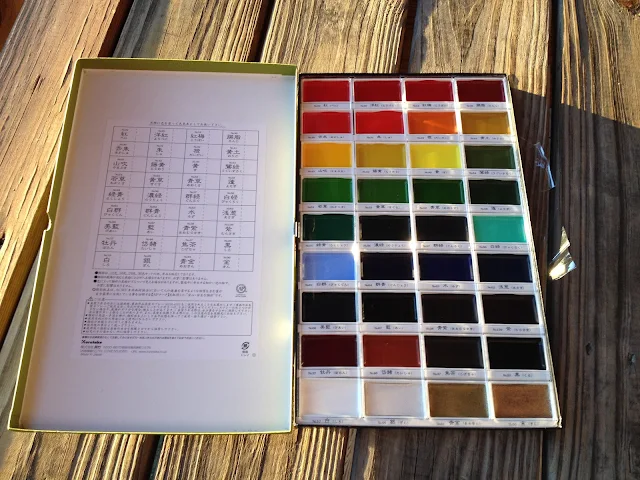













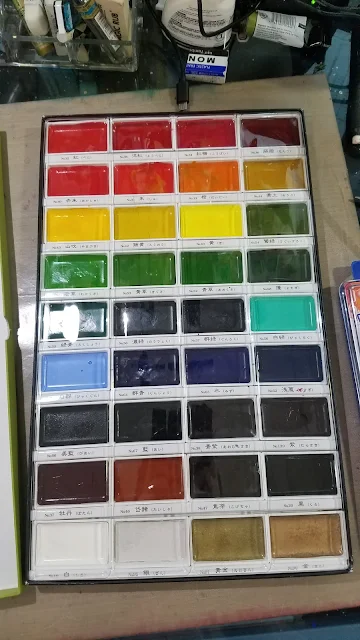






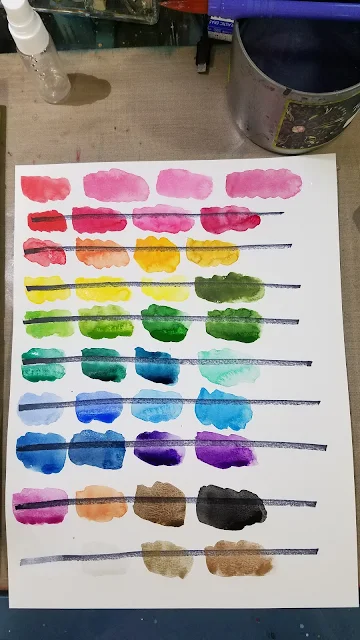















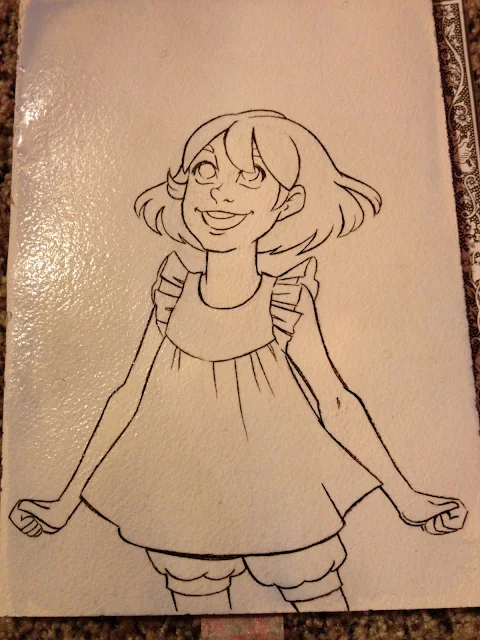







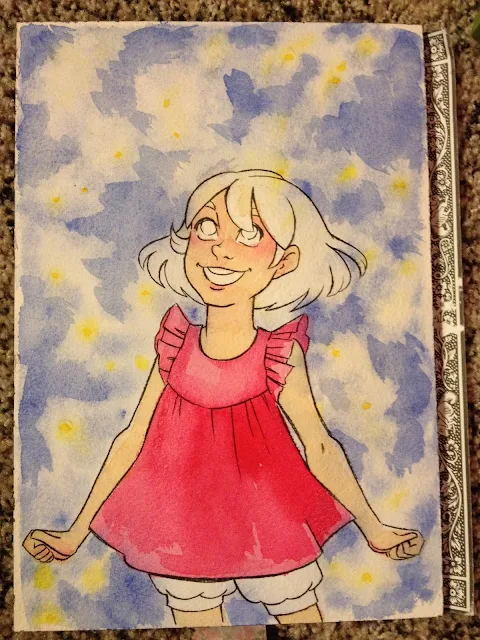






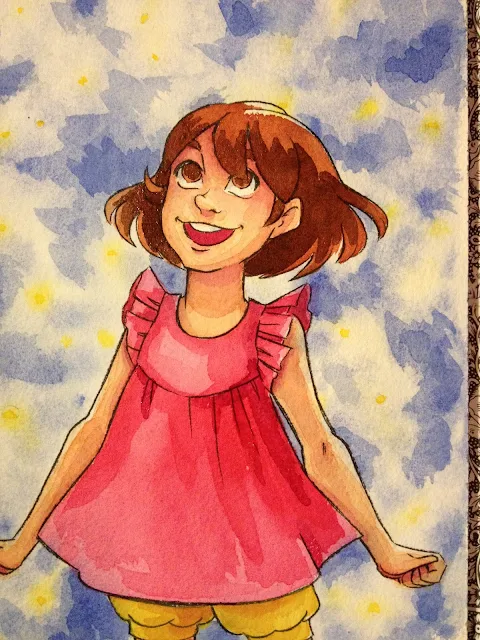
























Comments
Post a Comment